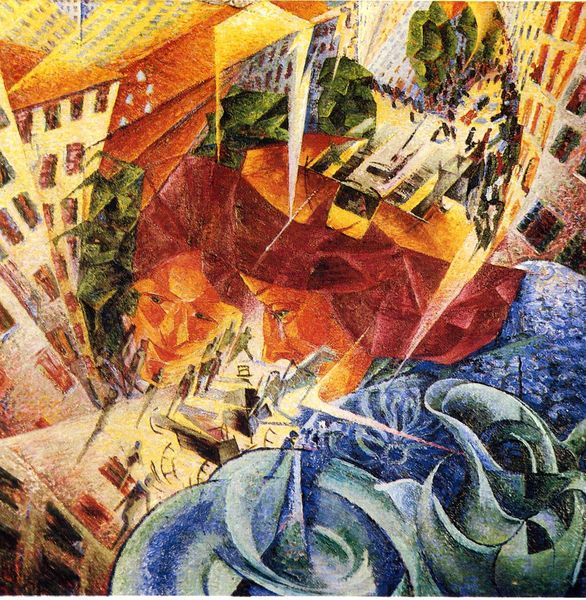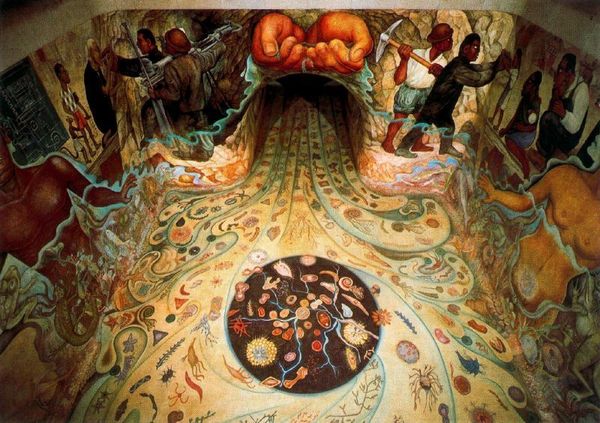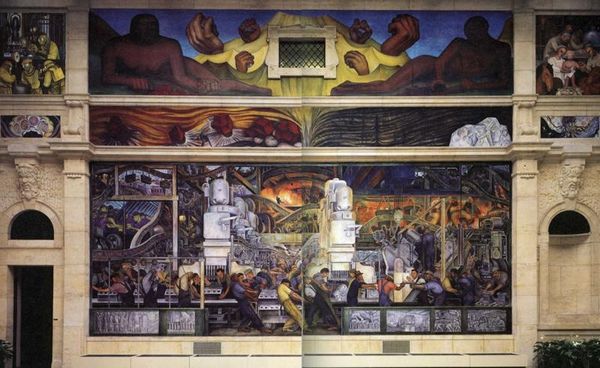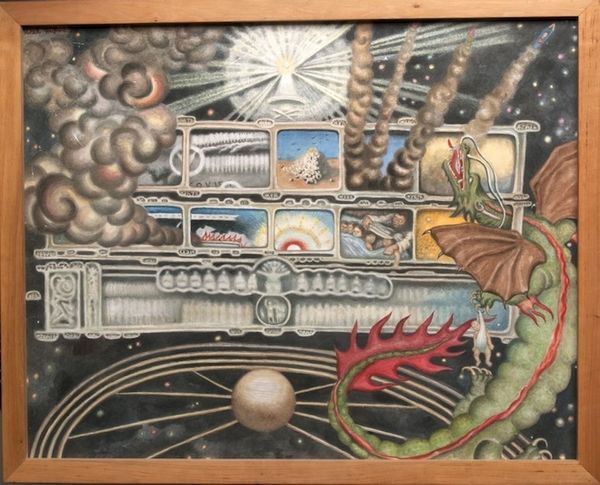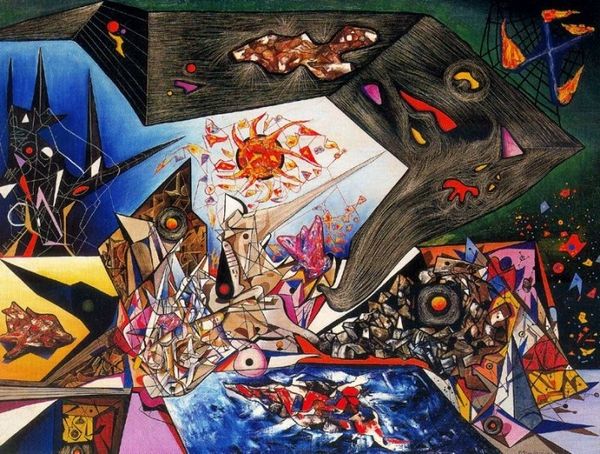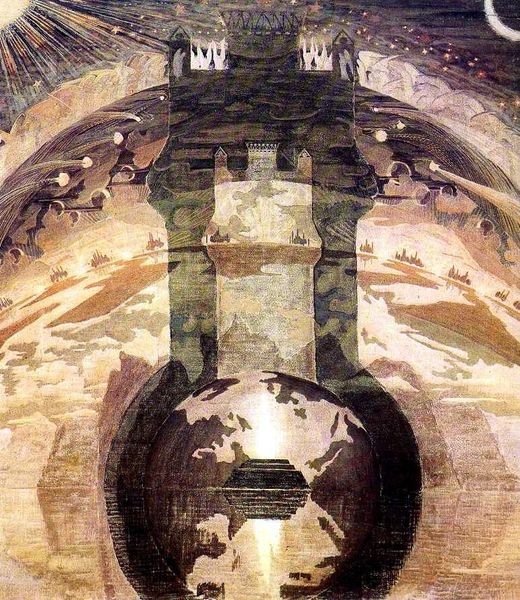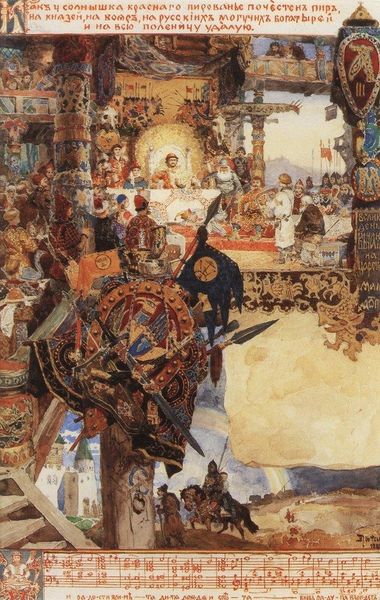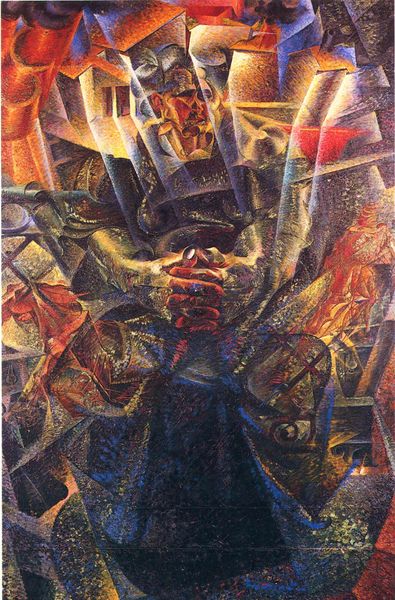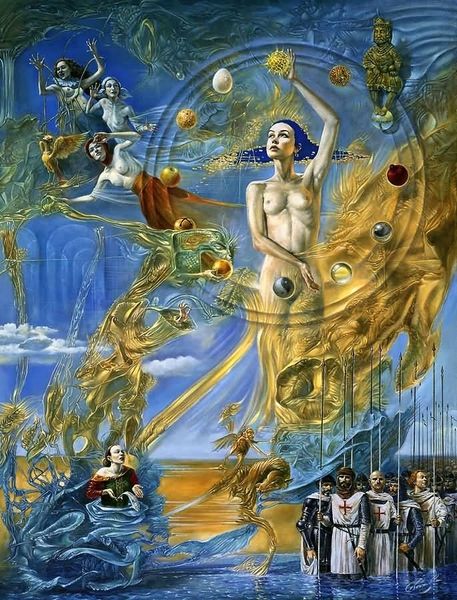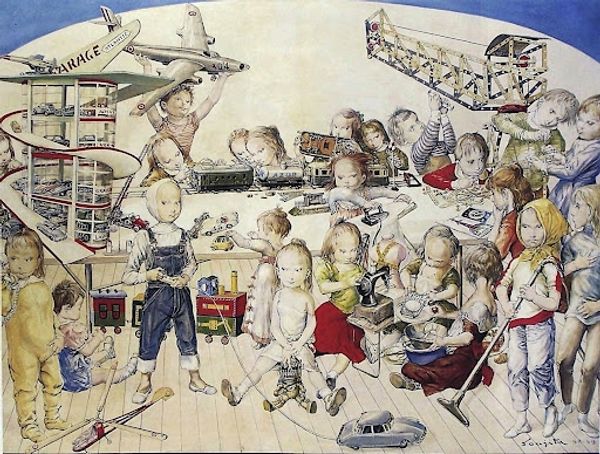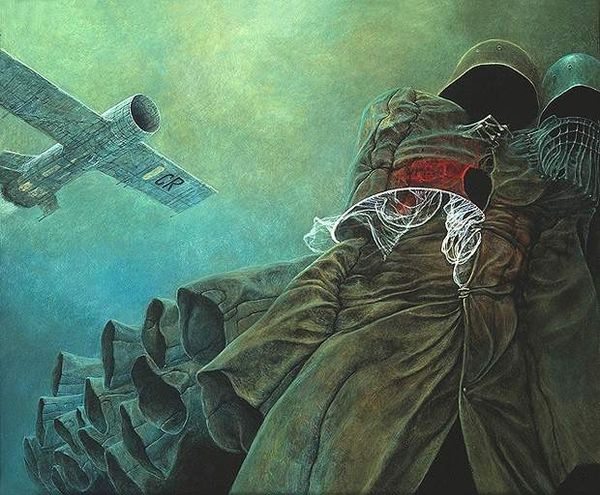
Man at the Crossroads/Man, Controller of the Univers 1934
0:00
0:00
diegorivera
Palacio de Bellas Artes, Mexico City, Mexico
fresco, mural
#
portrait
#
narrative-art
#
figuration
#
fresco
#
group-portraits
#
mexican-muralism
#
history-painting
#
mural
#
modernism
Copyright: Diego Rivera,Fair Use
Editor: Diego Rivera's mural, "Man at the Crossroads," from 1934. It’s a fresco, brimming with figures and machinery… The piece seems to reflect on humankind’s evolving role amidst industrial advancements. How do you interpret this work, especially in its historical context? Curator: The original mural was commissioned for Rockefeller Center in New York, but it was destroyed because it included an image of Lenin. Rivera repainted it here in Mexico City. Think about the political climate of the 1930s, a period defined by growing ideological polarization and socioeconomic inequality. This is not just a portrait, but an engagement with modernity, capitalism, and the hopes and failures of revolutionary movements. What does the "crossroads" represent to you? Editor: It's interesting to consider that name. The composition, with all those swirling, competing ideologies feels unstable, like anything could happen next, so maybe that instability represents choice, a branching point, maybe between capitalism and communism? Curator: Exactly. Rivera uses the imagery of technology – telescopes, microscopes, industrial machinery – to suggest the possibilities of scientific advancement. He shows us both the promise and the peril inherent in technological progress and the choices society faces regarding its application. He also emphasizes that the artist, too, plays a critical role in shaping those choices. What statement do you think Rivera is making about art and its role in society? Editor: It sounds like Rivera's highlighting the responsibility of the artist in challenging power structures and promoting social change through representation. I hadn’t thought of it that way. Thank you for connecting the work to its cultural roots. Curator: Indeed, considering the role of visual representation is crucial. Hopefully, this conversation inspired new insights into Mexican Muralism and social movements.
Comments
No comments
Be the first to comment and join the conversation on the ultimate creative platform.
